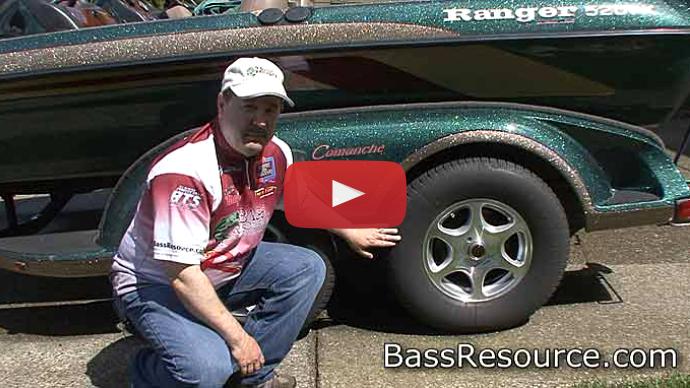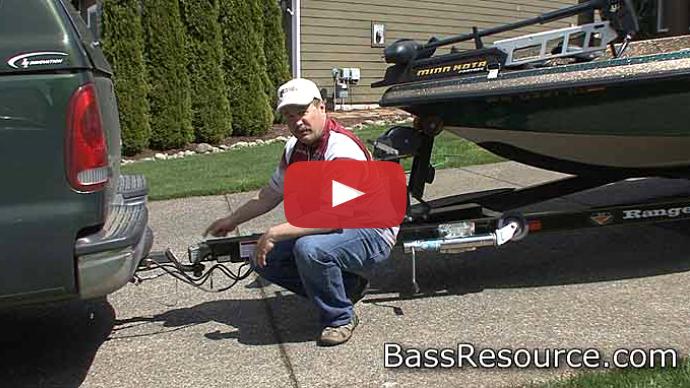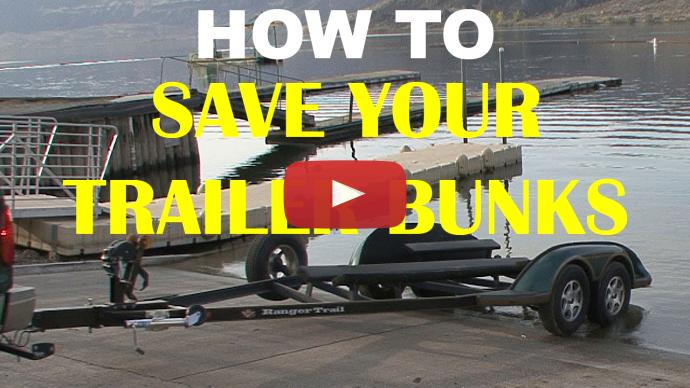Hey, folks. Glenn May here with BassResource.com. And if you've been watching my videos for a while, well, you know that I like to pay close attention to the maintenance schedules on all my equipment. And I'm pretty diligent about it. And I also do a lot of my own inspections in between routine maintenance. One of the things that I do is I check out that trailer on a regular basis. The best time to do that is when the boat's off the trailer.
So, usually, I give it a quick once-through when I'm going to get my trailer after a long day of fishing, I'm going to go pick up the truck and the boat and the trailer and pull it down to the ramp. I can give that trailer quick once-through just to see if there's anything egregious, right? Anything that's broken, or missing, or bent, or, you know, something that's amiss. And I just give it a good visual look. And then also about twice a year or so I look closer at the trailer and really get underneath there and take a look at everything and make sure everything's running okay.
Well, one of these times when I did the inspection, the more thorough inspection, I noticed that at my swing-away tongue, right at that pivot point, the tube here that you're looking at, right at the top, it had a little crack, about a 1/4-inch, 1/2-inch crack right on the tube. And that seemed amiss to me, that didn't seem right.
And so I looked at it closer, and it seemed to me that that plate that's above it was bouncing around or hitting that top part of the tube causing it to start to break away. In addition, the weld right up there at the top, that weld was beginning to fail too. It was actually cracked along there and pulling apart from the frame. So something wasn't right.
So I looked closer, and I couldn't see anything. But then I got underneath the trailer. And at the bottom part underneath this lower plate here where you see the bolt that's there now, there was actually a weld, and this post that goes through that tube was actually poking out through that weld. There's only about a third left of that weld remaining. It had rusted away, and that tube was poking through and was about ready to fail. It's about ready to go through. And at that point, the only thing holding the things together was the weld, which is beginning to break apart.
So wasn't too far away from a catastrophic failure while towing down, you know, going down the interstate at 65 miles an hour. Something terrible could have happened.
But what, wait? Oh, you say you go faster than 65 when you're towing. Okay, well, that's no surprise. A lot of people do that. They feel very comfortable towing their boat and going at faster speeds than 65, but there's a reason why federal law has it at 65 miles an hour, is because you can have a failure like something like this and it can cause a catastrophic event, especially at high speeds. Just something to keep in mind, guys, you may feel very comfortable towing that boat, but something can happen in a hurry and can change your whole world.
So a couple key takeaways from this. First of all, regularly inspect your trailer. I cannot tell you enough to do that. Always just check it when the boat's off the trailer. Give it a quick once-through. But, you know, a couple times a year, get up underneath that trailer and give it a more thorough inspection. Get up there with a flashlight and look carefully at everything you can, the welds, the bolts, any moving parts, the springs, everything, look at it. But especially, look at the stuff that you can't see when you're standing above it. This is how this was missed. This is a part that was failing that was on the bottom part of the trailer that there's no way you can see it unless you're on the ground looking up. So make sure you check every spot that you normally can't see when you're above the trailer, and hopefully, you can find a problem and solve it before it becomes an issue. So for more tips and tricks like this, visit BassResource.com.



